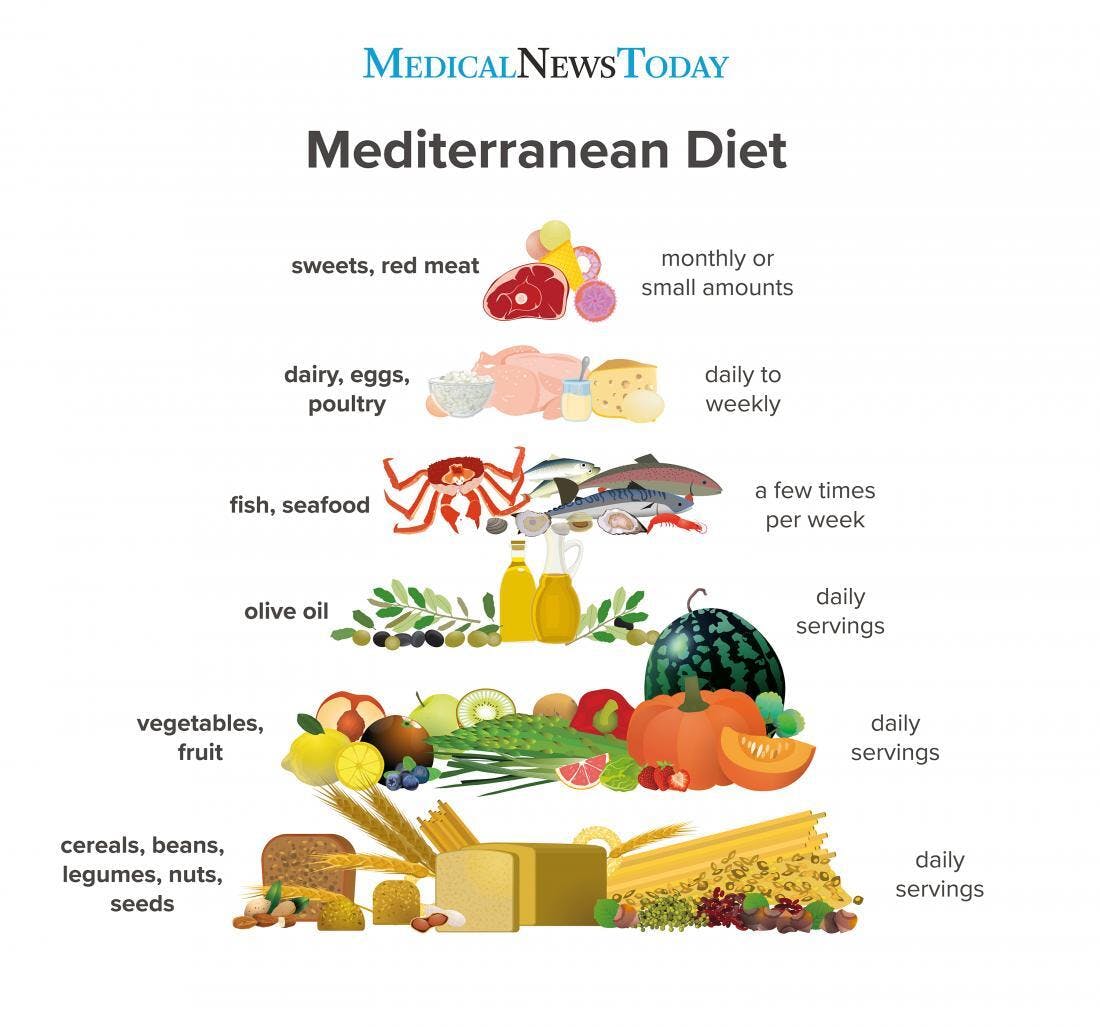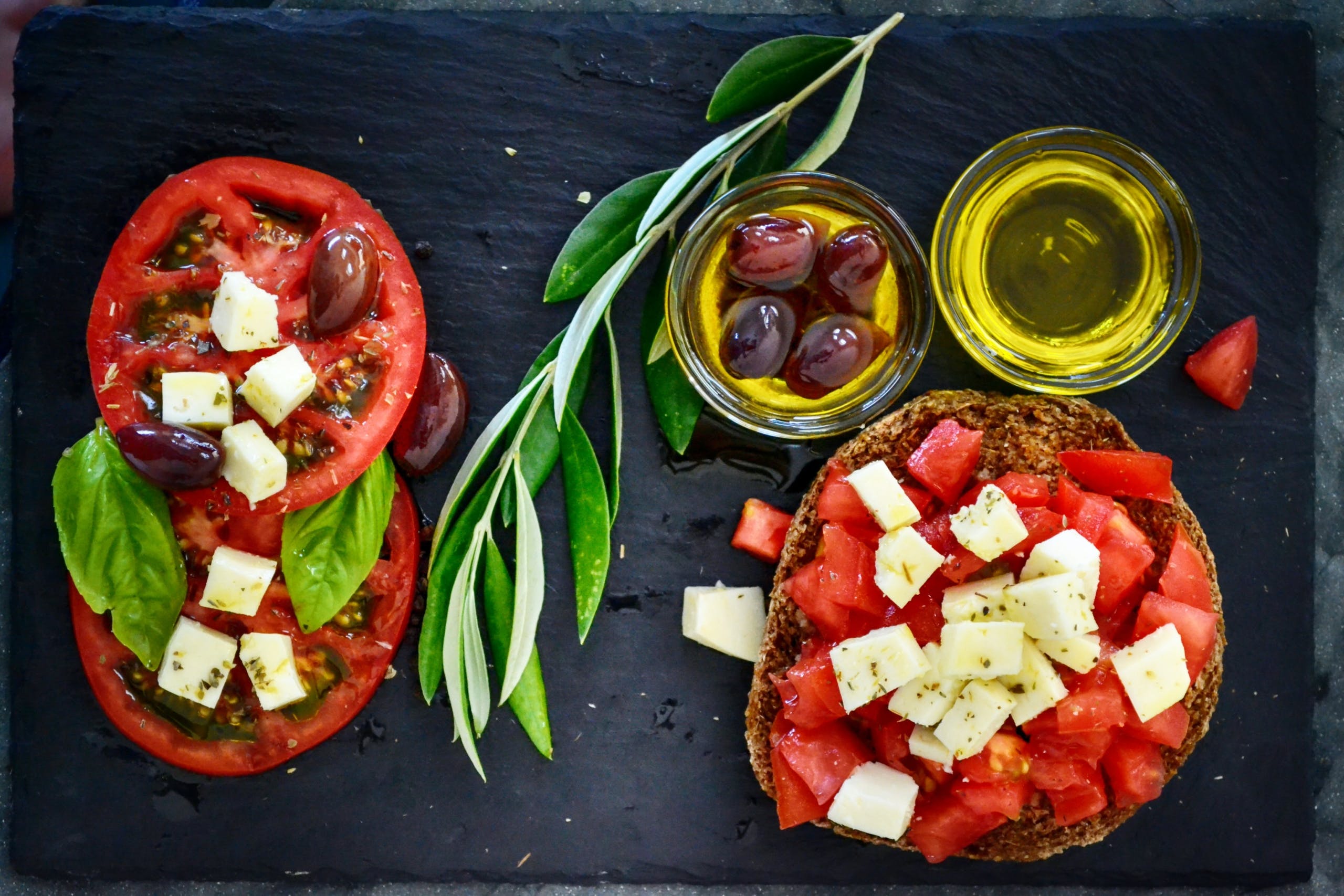National Mediterranean Diet Month is important so the public can learn the benefits of the Mediterranean diet. Moreover, National Mediterranean Diet Month is an event that was launched in 2009 by Oldways Mediterranean Foods Alliance to promote the Mediterranean diet. Additionally, it is remarkable to note that UNESCO accepted the Mediterranean diet as the cultural heritage of humanity in 2013.
The first study that questioned the effect of diet on health was published in 1986. However, in this study which called the Seven Countries Study, eleven thousand people were followed since 1960. It was first explained in this study that dietary healthy fat consumption reduced the risk of heart disease, leading to many scientific studies on the Mediterranean diet were conducted.

1. What is the Mediterranean Diet?
The Mediterranean diet is a healthy diet that includes food products grown in the Mediterranean region. Moreover, there is no single definition of the Mediterranean diet. According to most authorities, the components of the Mediterranean diet are extra virgin olive oil, green leafy vegetables, fruits, cereals, oilseeds, fish, and red wine.
Above all, the food pyramid representing the Mediterranean diet has been updated several times. Let's look at the components of the Mediterranean diet through the last food pyramid:

Recommended Daily Nutrition Groups and Portions in the Mediterranean Diet
Non-Starchy Vegetables
The recommended daily intake is 4-8 servings. One serving is ½ cup of cooked vegetables or 1 cup raw vegetables. Non-starchy vegetables are artichoke, asparagus, beets, broccoli, brussel sprouts, cauliflower, cabbage, celery, carrot, tomato, eggplant, cucumber, onion, zucchini, turnip, pepper, salad greens and mushrooms.
Fruits
The recommended daily intake is 2-4 servings. One serving of fruit is fresh fruit (an apple, orange, banana, etc), or ½ cup of juice or ¼ cup of dried fruit. Fresh fruits should be preferred because they contain fiber.
Legumes and Nuts
The recommended total daily intake is 2-4 servings. One serving of legumes is ½ cups mexico, black beans, garbanzo beans, pinto beans, soybeans, peas, lentils, or ¼ cup of baked beans. One serving of nuts is 2 tablespoons of sunflower or sesame seeds, 1 tablespoon of peanut butter, 7-8 walnuts, 20 peanuts, or 12-15 almonds. Additionally, it is recommended to take 1-2 servings of oilseeds and legumes every day. In addition, legumes contain high fiber, protein, and minerals. Also, nuts contain high levels of unsaturated fats and can raise HDL cholesterol without raising LDL cholesterol.

Low-Fat Dairy Products
The recommended total daily intake is 1-3 servings. One serving of low-fat dairy products is 1 cup of skim milk or yogurt or 1 oz thin slices of cheese.
Fish and Seafood
The recommended intake is 2-3 servings per week. One serving is about 3 oz. Cook fish by baking, sautéing, broiling, roasting, grilling, or poaching. Choose fatty fishes like salmon, herring, sardines, or mackerel often. Moreover, the fat in fish is high in omega-3 fats, so it has healthy effects on triglycerides and blood cells.
Poultry
We can say optional consumption for this group. The recommended intake is 2-3 servings per week. One serving is about 3 oz. Bake, sauté, stir fry, roast, or grill the poultry you eat and eat it without the skin.

Whole Grains and Starchy Vegetables
The recommended intake is 4-5 servings a day. One serving is 1 oz for each group:
- 1 slice of whole-wheat bread
- ½ cup of potatoes or sweet potatoes
- 1 small whole-grain roll
- 6-inch whole wheat pita
- 6 whole-grain crackers
- ½ cup cooked whole-grain cereal (oatmeal, quinoa)
- ½ cup cooked whole-wheat pasta, brown rice, or barley
Olive Oil
The recommended amount is 4-6 servings per day. One serving of olive oil is 1 tablespoon.

Eggs
The recommended amount is 4 times a week for egg yolk. And, there is no limitation for egg whites.
Sweets
Eat dessert rarely. Eat fruit instead of dessert.
Red Meat
Lean red meats (beef, pork, lamb, and beef) can be eaten 4 times a month.

2. Health Effects of the Mediterranean Diet
Numerous studies on the Mediterranean diet have shown how beneficial it is to health. In addition, the diet has many benefits to health, as it contains healthy fats, high fiber content, and antioxidant content. Moreover, it contains healthy fats, high fiber content, and antioxidant content.
Mediterranean Diet and Heart Diseases
Heart disease (cardiovascular disease) is a high-risk condition and can cause stroke and high blood pressure. According to data in 2010, 35% of the American population was affected by this disease.
Monounsaturated fatty acids found in extra virgin olive oil and omega-3 fatty acids found in fish have a protective effect on heart vessels. In addition, a study of about 26,000 women found that those who follow the Mediterranean diet for 12 years have a 25% lower risk of developing cardiovascular disease.

Mediterranean Diet and Diabetes
The Mediterranean diet is high fiber due to fruits such as vegetables, and legumes. Moreover, adequate fiber intake helps the blood sugar to rise gradually is a factor that reduces the risk of diabetes.
Above all, in a comprehensive study, it was revealed that the Mediterranean diet reduced the probability of developing type 2 diabetes by 72%.
Mediterranean Diet and Cancer
The Mediterranean diet contains high amounts of antioxidants due to fruits and vegetables. Furthermore, cancer is the result of cell damage, and antioxidants prevent it. Moreover, preventing this damage is especially important in terms of protection against breast cancer and colon cancer.
A study that observed the effect of diet on factors like aging and the development of diseases. For example, cancer found that women who follow a Mediterranean-type diet have a 46% higher chance of healthy aging.

3. A Mediterranean Recipe: Hummus
Ingredients for 2 servings
- 15 oz (one can) chickpeas (aka garbanzo beans), drained and rinsed
- ¼ teaspoon salt
- 1 clove garlic
- ½ teaspoon ground cumin
- ½ cup basil pesto (110 g)
- 1 tablespoon lemon juice
- 2 tablespoons water
Preparation
Add chickpeas, garlic, basil pesto, lemon juice, and seasonings to the bowl of a 2-quart food processor. Blend until smooth. While blending, slowly add in the olive oil and water until hummus is creamy and smooth.
Optional Ingredients
Garnish with additional red pepper flakes, chopped parsley, and a drizzle of olive oil.
Enjoy!















